
This quarter, Cal Poly Pomona was pleased to host Frank Clementi and his topic studio “The Heresy of Function”. The studio proposes to apply function to famous monuments, since they exist without any pragmatic purpose. Monuments exist not to provide utility, but to symbolize our memories and beliefs. Projects aim to challenge the modernist fundamental of “form follows function” by identifying the cultural significance of monuments, and addressing a proper program. As Frank says, students shall combine the “mechanical and the metaphysical" to reprogram these iconic structures, using the techniques of: "retrofit, agglomerate, mime, graft, occupy, shear, blend, meta-morph, repeat, ghost, hot-rod, re-skin, eviscerate, stitch, and drape".
"The Taj Mahal et. al" by Saba Salekfard
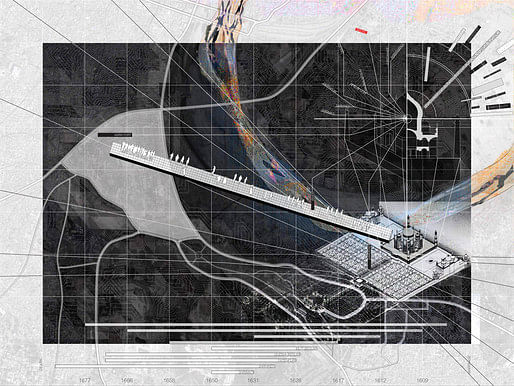 Built in 1648 by Shah Jahan, the Taj Mahal stands as the monument for true and enduring love. The mausoleum was built as a symbol of the Shah’s eternal love for his wife, Mumtaz Mahal, proceeding her death. What most do not know about this love story is that the Shah actually had 8 other wives. Thus, in this proposal, the Taj Mahal will focus on and be dedicated back to the other wives. By moving them back onto the site, the Taj will function as a love hotel, aimed at exploring other forms of love. In their honor, eight precedent rooms were created, House[s] of: Yearning, Broken Relationships, Courting, Glorious One-Night Stands, Narcissists, Earthly Pleasures, Lost Relationships. Each serving their own functions, the houses aim to: ponder, fix, consummate, explore, engage, indulge, and rekindle relationships. The Taj thus becomes a love nest; a place for rendezvous; a 3rd space, where the public comes for a private meeting. Consequently, nest construction becomes the method to formulate the architecture. Rooms first form volumetrically, then move to linear, planar conditions to accompany the nest construction. Since the architecture doesn’t lie in the sticks alone, it then must reside in the way the sticks are assembled. If sparsity is reduction, clarity, and planar, then density is increase, ambiguity, and volumetric. Using the tectonics of layering and placement, the sticks use the rules of sparse vs density to fill the Taj. The nest construction aims to densify the Taj to the point that if it were removed, the sticks could stand alone as a new monument: a new icon for the changing ideals of love.
Built in 1648 by Shah Jahan, the Taj Mahal stands as the monument for true and enduring love. The mausoleum was built as a symbol of the Shah’s eternal love for his wife, Mumtaz Mahal, proceeding her death. What most do not know about this love story is that the Shah actually had 8 other wives. Thus, in this proposal, the Taj Mahal will focus on and be dedicated back to the other wives. By moving them back onto the site, the Taj will function as a love hotel, aimed at exploring other forms of love. In their honor, eight precedent rooms were created, House[s] of: Yearning, Broken Relationships, Courting, Glorious One-Night Stands, Narcissists, Earthly Pleasures, Lost Relationships. Each serving their own functions, the houses aim to: ponder, fix, consummate, explore, engage, indulge, and rekindle relationships. The Taj thus becomes a love nest; a place for rendezvous; a 3rd space, where the public comes for a private meeting. Consequently, nest construction becomes the method to formulate the architecture. Rooms first form volumetrically, then move to linear, planar conditions to accompany the nest construction. Since the architecture doesn’t lie in the sticks alone, it then must reside in the way the sticks are assembled. If sparsity is reduction, clarity, and planar, then density is increase, ambiguity, and volumetric. Using the tectonics of layering and placement, the sticks use the rules of sparse vs density to fill the Taj. The nest construction aims to densify the Taj to the point that if it were removed, the sticks could stand alone as a new monument: a new icon for the changing ideals of love.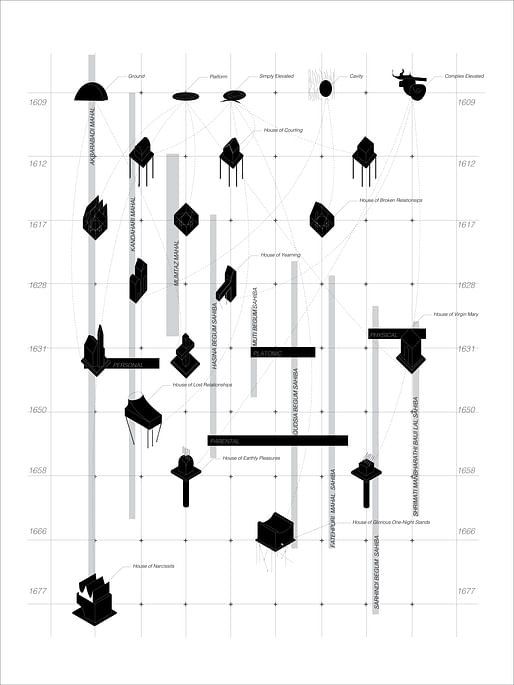
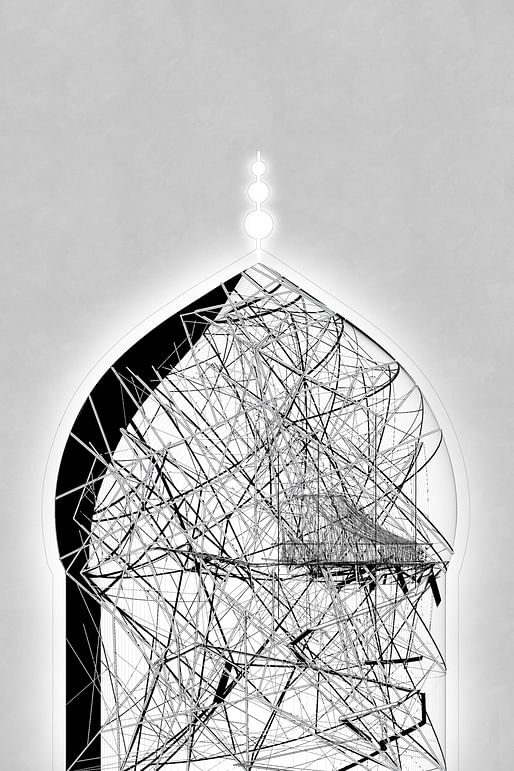
"Washington's Wounds" by George Abraham
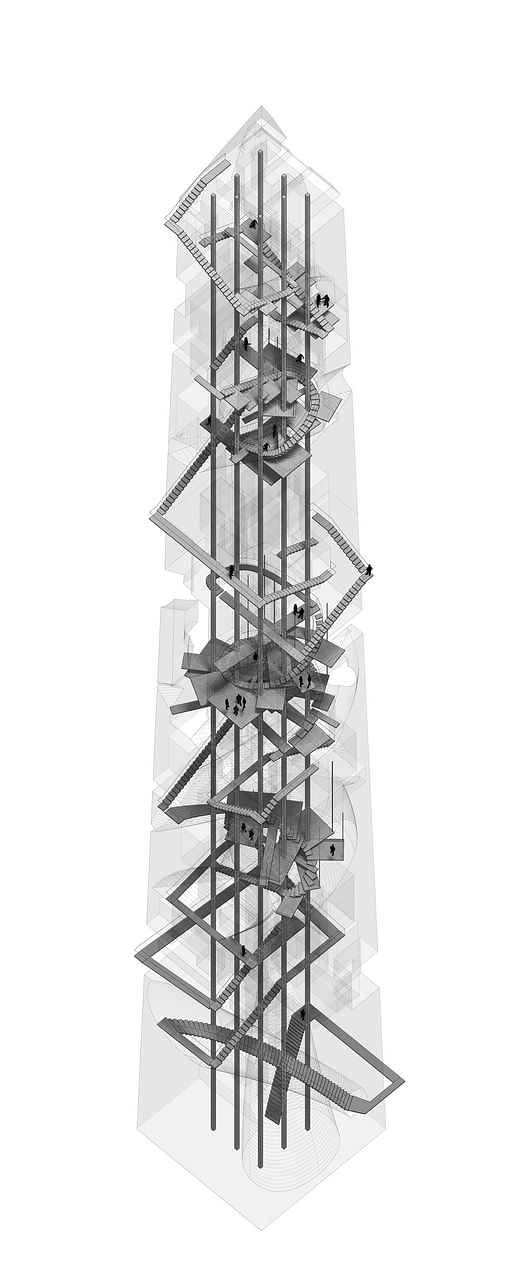 The project operates upon the Washington Monument in order to address the dichotomous history of protest and governance surrounding the site. The interventions provide a space for reorientation for the Senators. They will dwell in the void of the protest, communally. The vantage point above the horizon will allow for the senators to connect themselves to the lands they act on behalf of. They will feel the presence of the nation watching them as they perform their lives. This omnipresent eye of the nation, coupled with the arabesque and grotesque atmosphere of the void, will serve to unify the members of the Senate in their task of legislation.
The project operates upon the Washington Monument in order to address the dichotomous history of protest and governance surrounding the site. The interventions provide a space for reorientation for the Senators. They will dwell in the void of the protest, communally. The vantage point above the horizon will allow for the senators to connect themselves to the lands they act on behalf of. They will feel the presence of the nation watching them as they perform their lives. This omnipresent eye of the nation, coupled with the arabesque and grotesque atmosphere of the void, will serve to unify the members of the Senate in their task of legislation.
The Washington monument, completed in 1888, takes the form of an obelisk standing 555' tall and 55' wide. The original obelisks of Egypt were monolithic symbols of the sun god Ra. The Washington Monument is hollow, and was built for George, the reluctant president. Since its construction, the monument's meaning has evolved to transcend this one man. Today it stands as the symbol of the nation. In the past 127 years, the monument has witnessed millions of passionate citizens cry out against the iniquities of their country. The legislative body has been untimely in their response to these protests.
In order to rectify the anguish felt by those persecuted by the shortcomings of the law, the monument is subtracted from. The history of protests on the National Mall is harvested as the driver for the void. Subsequent to the subtraction, there will be the reconstruction of the monument as a true obelisk. The monument will then achieve a quasi monolithic status instead of it's feeble existence as a fake monolith. This will also allow for the resolute reading of these cavities. The resulting monument will operate as a symbol of the democratic energy the nation was founded upon.

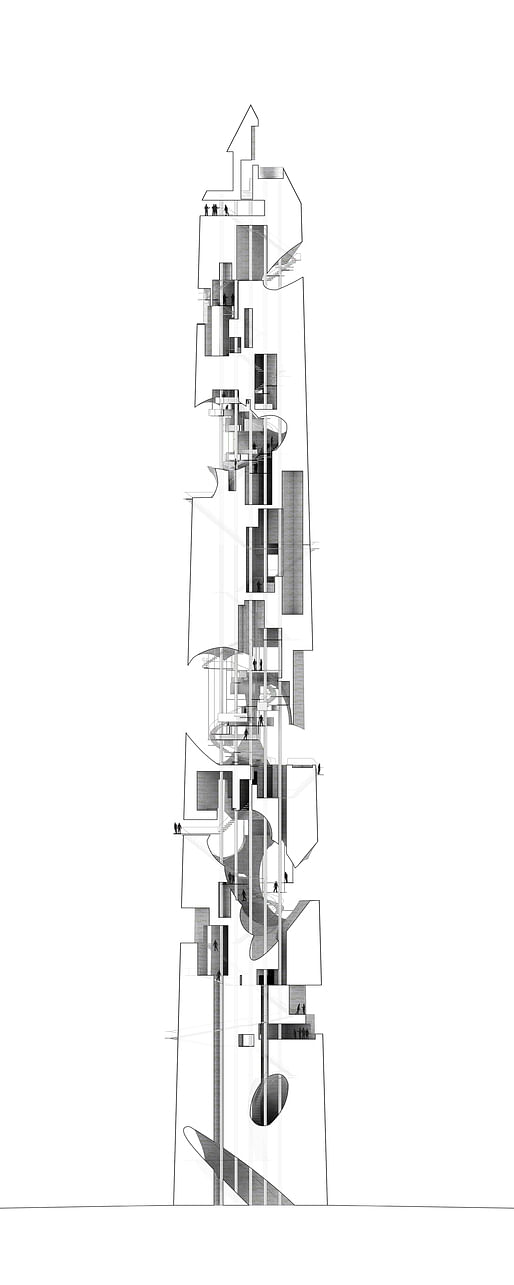
"Arlington Archive" by Laida Aguirre
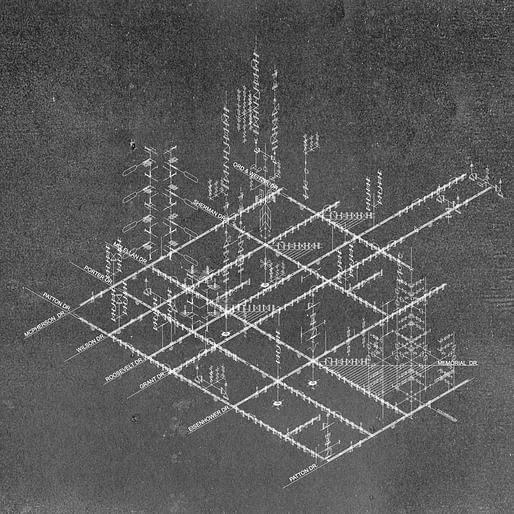 'Arlington Archive' is an indexical architectural proposal for the expansion of Arlington National cemetery. The project takes note of the recent controversy over the mismanagement and mismatch of personal files and burial spots by the cemetery administration. It proposes a thorough overhaul of the organizational system of the site through an architectural experience. The project is a replicable set of instructions and a catalog of parts for a transparent 6 floor tower that houses all of the various objects that represent the people buried: personalized sculptural tombstone, flags, war symbols, personal files, uniforms and personal memorabilia. The project is a methodical approach to archiving objects and information. It is a project in 3 parts:
'Arlington Archive' is an indexical architectural proposal for the expansion of Arlington National cemetery. The project takes note of the recent controversy over the mismanagement and mismatch of personal files and burial spots by the cemetery administration. It proposes a thorough overhaul of the organizational system of the site through an architectural experience. The project is a replicable set of instructions and a catalog of parts for a transparent 6 floor tower that houses all of the various objects that represent the people buried: personalized sculptural tombstone, flags, war symbols, personal files, uniforms and personal memorabilia. The project is a methodical approach to archiving objects and information. It is a project in 3 parts:
1 An initial audit of all existing objects, symbols and people at the cemetery.
2 A blueprint proposal for a 6 floored replicable transparent tower.
3 A set of written instructions on how to organize the objects within the towers.
By creating an aggregate of objects the project highlights the complexity of a person’s legacy. Spatially, it takes the existing arrays of tombstones as an exemplar architectural experience and recreates it for the visitor in each floor of the tower through an immersive experience of often repetitive and mundane objects. The proposal elevates the complex simplicity of the cemetery while introducing a meticulous organizational system.


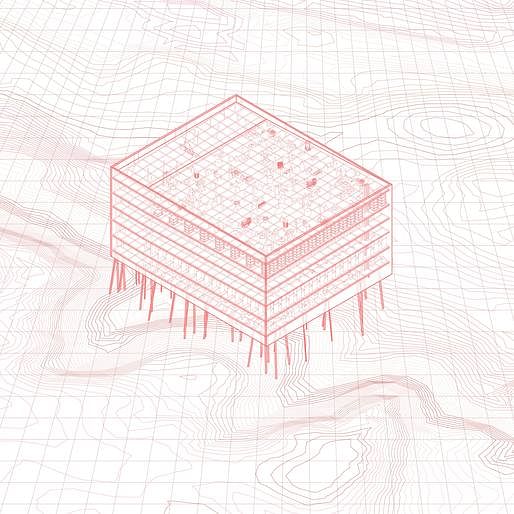
"Stonehenge Reliquary" by Manny Zermeno
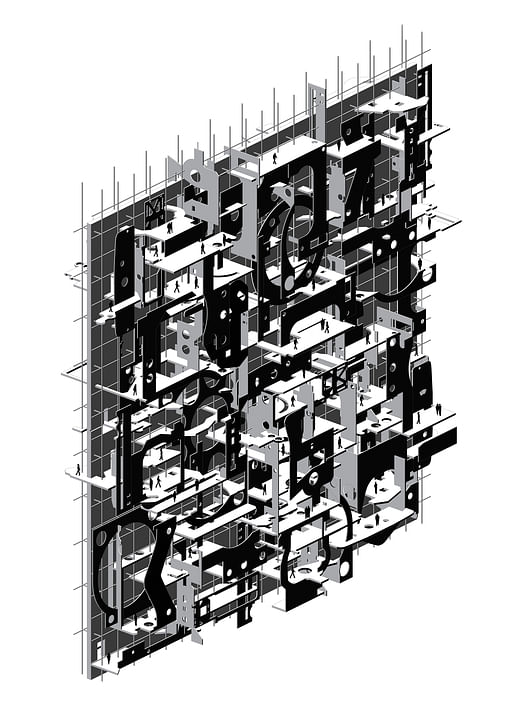 Stonehenge was: an ancient burial site, a healing center, a solar calendar, and a pilgrimage destination for Druids. Its type of ‘use’ has ranged spanning its 5000 years of existence, but its true purpose has long been lost. Its massive scale suggests that Stonehenge was once vital to the ancient people who built it. But in the 1900’s we restored it by filling its cavities with reinforced concrete, and placing the enormous fallen stones back into position. Had we undermined the loss of value and authenticity? Why was restoration necessary if Stonehenge, like most monuments in the world, was useless? Thus, the purpose of this project was to create an augmentation that would assemble a complete, or a story perhaps, symbiosis of function and meaning. The sacred monument itself would be untouched, but its symbolism and specificity would cause an assemblage of other useless objects anonymous to their purpose.
Stonehenge was: an ancient burial site, a healing center, a solar calendar, and a pilgrimage destination for Druids. Its type of ‘use’ has ranged spanning its 5000 years of existence, but its true purpose has long been lost. Its massive scale suggests that Stonehenge was once vital to the ancient people who built it. But in the 1900’s we restored it by filling its cavities with reinforced concrete, and placing the enormous fallen stones back into position. Had we undermined the loss of value and authenticity? Why was restoration necessary if Stonehenge, like most monuments in the world, was useless? Thus, the purpose of this project was to create an augmentation that would assemble a complete, or a story perhaps, symbiosis of function and meaning. The sacred monument itself would be untouched, but its symbolism and specificity would cause an assemblage of other useless objects anonymous to their purpose.
Influenced by the Russian art theory of Suprematism by Kazimir Malevich and El Lissitzy, the method of the project began by taking objects that were once important but have now lost their usefulness. Two-dimensional representations were taken of these objects to abstract them from the context of what they were or where they came from. The appearances of their origin were in themselves meaningless. The scale and material became irrelevant. Instead, the essential thing was pure feeling. In all operations, space was created through assemblage of representations of objects, not necessarily giving the objects their old or new volume. They acted as planes, folding and intersecting with each other to create spatial intimacy, rhythm, and specificity.

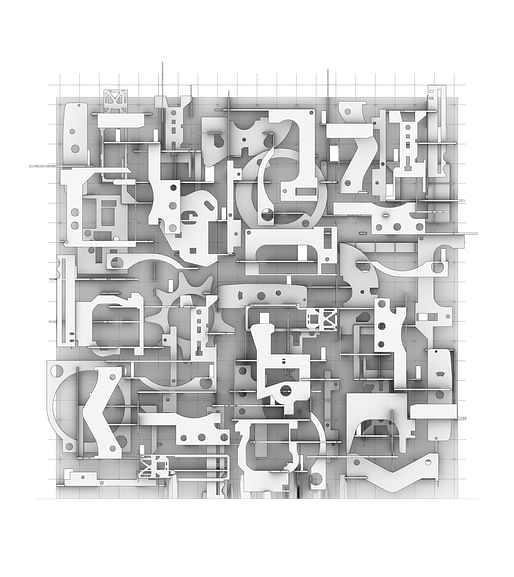
"The 2016 Eiffel Dérive" by Noel Vazquez
 “...drifting without destination, neither going to work nor properly consuming...”
“...drifting without destination, neither going to work nor properly consuming...”
The Eiffel Tower's construction ran from 1887 to 1889. It was built for the World's Exposition of 1889, with its purpose being to display France's engineering prowess, and still remains the tallest structure in Paris (1000 feet). It is made up of 18,000 standardized pieces that were assembled off site. Groups against its construction, such as "Artist against the Eiffel Tower”, argued that the tower's erection would dominate "Paris like a gigantic black smokestack... humiliated monuments will disappear in this ghastly dream."
This project takes the Eiffel Tower and test its only function: its monumentality. The way this experiment is done is not by altering the monument itself, but by altering its location. If successful, the Eiffel Tower’s new site will receive comparable Parisian psycho-geographical characteristics. The result will inform a new appreciation of Detroit's landscape using the Situationist technique of dérive: “from a dérive point of view cities have psycho-geographical contours, with constant currents, fixed points and vortexes that strongly discourage entry into or exit from certain zones”. This project hopes to change the landscape and perception of cities through one architectural catalyst, arguably the most recognizable one of all. In order to develop new psycho-geographies, we must imprint programs that generate social activity onto those that once did. The Eiffel Tower will tour different sites around the world, while in this proposal we can see the first of these examples: Detroit, Michigan.
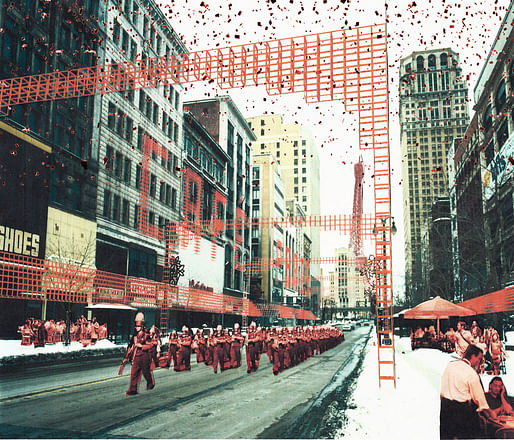
"Cirque de Triomphe" by Parker Ammann
 The Arch presented something unique in the realm of viewing because of the inability to maintain one viewpoint. The way it was originally meant to be approached, and passed through, can only be seen by car; if seen by which one will be diverted around the traffic circle. The pedestrian with the power to fully approach the monument is forced to do so through underground passage ways. That is where I found the window to exploit. I wanted the experience of going around an object and approaching an object to be melded together (the notion of a blurred building had come up between Frank and I during desk crits).
The Arch presented something unique in the realm of viewing because of the inability to maintain one viewpoint. The way it was originally meant to be approached, and passed through, can only be seen by car; if seen by which one will be diverted around the traffic circle. The pedestrian with the power to fully approach the monument is forced to do so through underground passage ways. That is where I found the window to exploit. I wanted the experience of going around an object and approaching an object to be melded together (the notion of a blurred building had come up between Frank and I during desk crits).
What I really enjoyed about the project was something I had unintentionally done, but logically was the only way it could have happened. I realized how bluntly I had translated from one to three dimensional representation. In elevation and plan each frame was represented by one dimension: a line, in section each frame was represented in two dimensions: drawings, then finally connected the sections together in a physical model to create the three dimensional architecture. Thinking of each frame as an instance then connecting them accentuated the notion of the blur on the building, because at the base level they are created in the same way.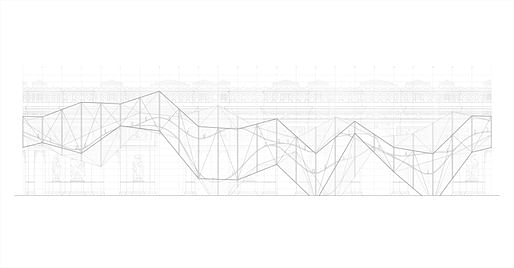
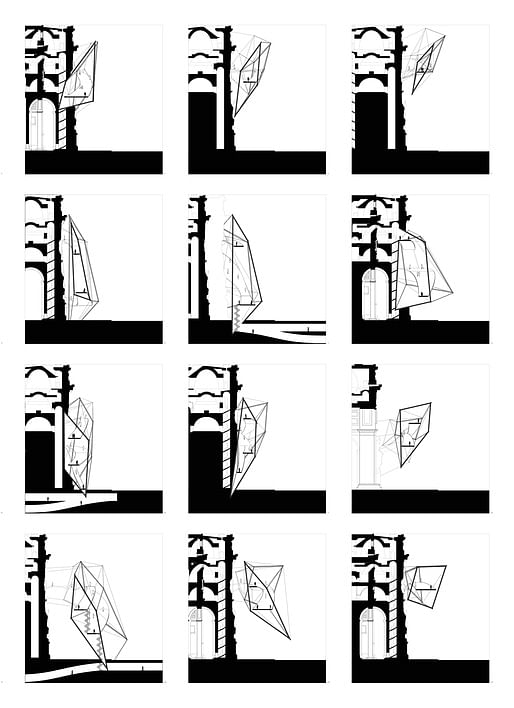
Investigating architecture's ability to reach a broader culture.
No Comments
Block this user
Are you sure you want to block this user and hide all related comments throughout the site?
Archinect
This is your first comment on Archinect. Your comment will be visible once approved.